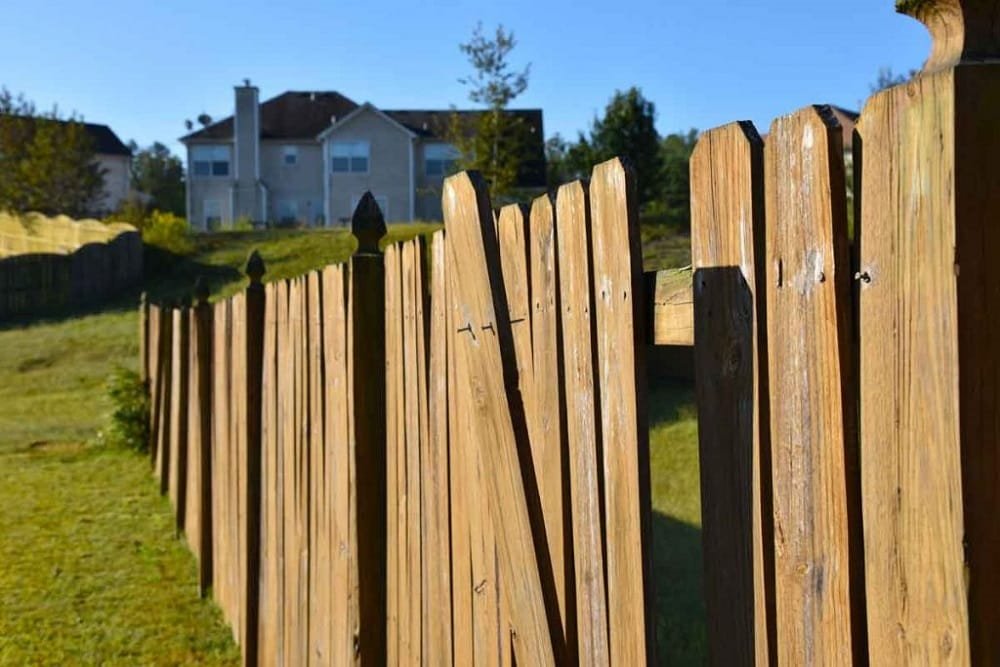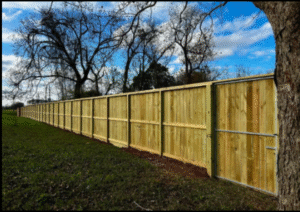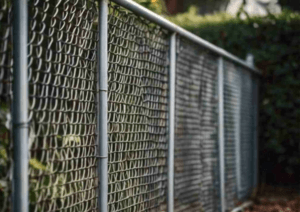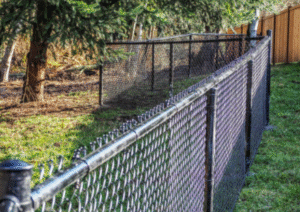When it comes to enhancing your property, a quality fence can make all the difference. Not only does it define boundaries, but it also adds aesthetic appeal and security to your home. Whether you’re looking to install a new fence or repair an existing one, understanding the ins and outs of fence installation & repair is crucial. From choosing the right materials to knowing when it’s time for professional help, there’s much to consider in ensuring that your fencing project is successful.
As any homeowner knows, a sturdy fence isn’t just about looks; it’s an investment in privacy and protection. But navigating through various options can be overwhelming. This guide will break down everything you need to know about quality fencing so you can make informed decisions every step of the way—whether you’re taking on the task yourself or hiring experts for installation & repair work.
Let’s dive into what makes a great fence!
Importance of a Good Fence
A good fence is more than just a boundary; it’s your home’s first line of defense. It provides security, keeping unwanted visitors and wildlife at bay. This peace of mind is invaluable for families with children or pets.
Beyond safety, a well-constructed fence enhances curb appeal. A stylish design can complement your home’s architecture, making it stand out in the neighborhood.
Additionally, fences offer privacy from prying eyes. Whether you’re hosting a backyard barbecue or enjoying quiet moments alone, they create an intimate space that feels like your own oasis.
Moreover, quality fencing can increase property value. Potential buyers often see a durable and attractive fence as an appealing feature.
Fences can define outdoor spaces effectively—creating areas for gardens or play zones while adding structure to landscaping designs. In many ways, investing in quality fencing pays off both functionally and aesthetically.
Factors to Consider Before Installing or Repairing a Fence
Before diving into fence installation & repair, several factors warrant attention.
- Start with local regulations and zoning laws. Understanding these rules can save you from fines or mandatory removal later on.
- Next, assess your property’s layout. Consider the terrain, as steep slopes may complicate the project. Also, think about existing landscaping; you’ll want to preserve trees and gardens while installing a quality fencing solution.
- Your purpose for the fence matters too—whether for privacy, security, or decorative appeal will influence material choice and design.
- Don’t forget to evaluate your budget realistically. Quality fencing might come at a higher cost upfront but could save money in repairs down the line.
- Gauge your own skills if opting for DIY work versus hiring professionals. Knowing when to call an expert can ensure durability where it counts most in any installation & repair scenario.
Types of Fences and Their Pros and Cons
Wood fences are classic and versatile. They offer a natural aesthetic that blends well with landscapes. However, they require regular maintenance to prevent rot and insect damage.
- Vinyl fencing is another popular choice. It’s durable, low-maintenance, and available in various styles. On the downside, it can be more expensive upfront than wood options.
- Chain link fences provide security at a lower cost but lack privacy. They’re great for marking boundaries while keeping visibility intact.
- For those seeking durability, metal fences like aluminum or wrought iron are ideal. They’re strong and long-lasting but may come with higher installation costs.
- Composite fences combine materials for added strength while looking similar to wood. Though they resist fading and splintering, their price point can be on the higher side compared to traditional wood options.
Step-by-Step Guide to Installing or Repairing a Fence
Installing or repairing a fence can feel overwhelming, but breaking it down simplifies the process.
- Start by gathering all necessary tools and materials, including posts, panels, nails, and concrete.
- Next, mark your property lines to ensure compliance with local regulations. This step prevents potential disputes with neighbors.
- Dig holes for the fence posts at least two feet deep – this ensures stability. Space them evenly based on the type of fence you’re installing.
- After placing the posts in their holes, fill each hole with concrete for added support. Allow time for it to cure properly before proceeding.
- Install panels between the secured posts using appropriate fasteners. Ensure everything is level to maintain aesthetics and functionality.
- For repairs, assess damaged sections first. Replace broken boards or realign leaning posts as needed while keeping an eye on overall structure integrity throughout the process.
Hiring a Professional vs DIY Approach
When it comes to fence installation & repair, the choice between hiring a professional and opting for a DIY approach can be daunting. Quality fencing requires not just skill but also the right tools.
Hiring professionals ensures that you benefit from their expertise. They understand local regulations, materials, and techniques that can make your fence last longer. With their experience, they often complete projects more efficiently than an inexperienced homeowner could.
On the other hand, going the DIY route can save money upfront. If you have some basic skills and are ready to learn, installing or repairing your own fence can be rewarding. It allows for personal creativity in design as well.
However, keep in mind that mistakes during installation or repair may lead to increased costs later on. Weighing both options against your budget and time constraints will help you decide which path is best suited for your needs.
Common Mistakes to Avoid During Installation or Repair
When tackling fence installation or repair, many homeowners stumble over common pitfalls.
- One major mistake is neglecting to check local regulations. Failing to secure the necessary permits can lead to costly fines and removal.
- Another frequent issue is improper measurement. A few inches off can mean disaster, resulting in a crooked fence or sections that don’t fit together seamlessly. Always double-check your dimensions before cutting any materials.
- Using subpar materials is another misstep that compromises quality fencing. Investing in durable wood or sturdy metal ensures longevity and reduces future repair costs.
- Many DIY enthusiasts underestimate the importance of post depth as well. Shallow posts are susceptible to leaning or even toppling during storms.
- Skipping proper maintenance checks post-installation can be detrimental. Regular inspections help catch problems early before they escalate into significant repairs down the line.
Maintaining Your Fence for Longevity
To ensure your fence remains sturdy and visually appealing, regular maintenance is essential.
- Start by inspecting your fence for any signs of wear or damage. Look for loose boards, rusted nails, or broken posts.
- Cleaning is another vital part of upkeep. Use a gentle pressure washer to remove dirt and mildew. This not only enhances the appearance but also prevents long-term deterioration.
- If your fence is wooden, applying a protective sealant can work wonders. It guards against moisture and pests that commonly plague wood structures.
- For metal fences, consider repainting every few years to prevent rust buildup. Touch up any scratches promptly to maintain its integrity.
- Keep vegetation in check around the base of your fence. Overgrown plants can cause hidden damage over time if left unchecked. Regular trimming will help preserve both aesthetics and functionality.
Conclusion
When it comes to fence installation & repair, understanding the nuances can make all the difference. A good fence not only enhances your property’s aesthetics but also provides security and privacy. Taking the time to consider factors like local regulations, materials, and potential maintenance needs will ensure you choose wisely.
Avoiding common pitfalls during installation or repair can save both time and money. Simple mistakes often lead to costly corrections later on. Regular maintenance goes hand-in-hand with longevity; keeping an eye on wear and tear allows you to address issues before they escalate.
Investing in Quality Fencing pays off in numerous ways—enhanced curb appeal, increased property value, and peace of mind knowing your space is secured properly. Understanding these elements lays a solid foundation for making informed decisions about your fencing projects now and in the future.




